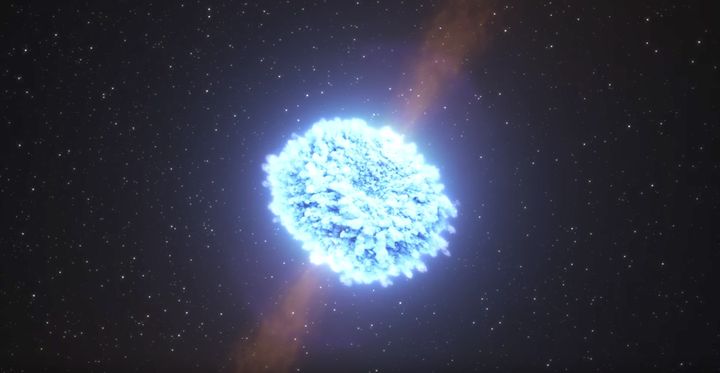While it’s true that we are in fact all made of stars, tracing the origins of every element on the periodic table has led to us asking more questions than getting answers.
Gold, silver and platinum for example have always been hard to pin down, for them to be naturally created you need a cosmic event of frankly unimaginable power.
Well as it happens scientists have just been able to witness an event of this magnitude in the form of two neutron stars colliding.

Not only was the resulting explosion so powerful that it gave us our first live glimpse of gravitational waves, but it now appears as though it has answered one of the biggest questions in astrophysics.
The gold we cherish and value so highly was almost certainly created from the explosion caused by two neutron stars colliding, also known as a kilonova.
In case you’re wondering just how much gold and precious metals are produced from an explosion like this, prepare yourselves.
The amount of gold produced was probably around 200 Earth masses, while the amount of platinum was even higher at 500 Earth masses.
Scientists are confident that in fact all the heaviest elements in the universe were probably created from explosions like this.
Tracking down the origins of the periodic table are easier said than done. We know that the lightest and simplest elements hydrogen and helium were created in the Big Bang, slightly heavier elements like carbon and oxygen were then formed in the cores of stars through fusion.
This process can only go as far as creating iron however. To go heavier you need a specialised environment where atoms are repeatedly bombarded by free neutrons.
To go as heavy as gold, platinum and uranium the science had to become theoretical as until earlier this year, we had no known event capable of producing these elements.
“For years the idea of a kilonova had existed only in our theoretical imagination and our computer models,” said Daniel Kasen, an associate professor of physics and of astronomy at UC Berkeley. “Given the complex physics involved, and the fact that we had essentially zero observational input to guide us, it was an insanely treacherous prediction ― the theorists were really sticking their necks out.”
Of course the theory turned out to be right, something that for astrophysicists, is just about the best outcome you can hope for.
“No one had ever seen a neutron star merger up close before,” explained Brian Metzger, a professor of astrophysics at Columbia University.
“Putting together the complete picture of such an event involves a wide range of physics - general relativity, hydrodynamics, nuclear physics, atomic physics. To combine all that and come up with a prediction that matches the reality of nature is a real triumph for theoretical astrophysics.”
